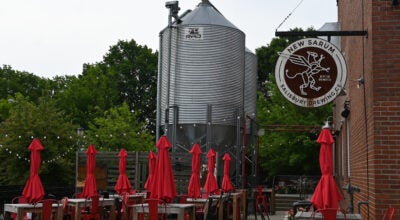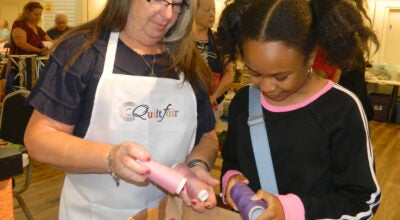Panel finds itís tough for consumers to decode product health benefits
Published 12:00 am Saturday, December 17, 2011
KANNAPOLIS ó From the consumer point of view, deciphering health benefits amidst a sea of brands, colors, styles, flavors, health claims and price points is difficult.
At least thatís what a consumer panel conducted at Sensory Spectrumís N.C. Discovery Center in Kannapolis concluded when evaluating yogurt as a healthy snack.
Sensory Spectrum is a partner with the N.C. Research Campus in Kannapolis.
The companyís Sensory Community Narrative panel confirmed that consumers are less familiar with yogurt than people think, said Judy Heylmun, Sensory Spectrumís vice president of business development and director of the N.C. Discovery Center in Kannapolis.
ěIt also demonstrates that people are aware of yogurt but have little knowledge of Greek yogurt,î Heylmun said.
For 25 years, Sensory Spectrum has proven the necessity of testing the sensory-value of products in consumer terms. Theyíve tested everything from food to furniture, including beverages, appliances and personal and home care products.
As a partner of the Research Campus, Sensory Spectrum is extending sensory analysis from the arena of marketing and product development to the early stages of research.
The company has contributed to creating a better North Carolina strawberry, a project of N.C. State Universityís Plants for Human Health Institute at the Research Campus.
Sensory Spectrum conducted sensory analysis on 16 strawberry breeding lines and cultivars and scored traits such as appearance, shape, color, flesh texture, firmness and flavor using panels of consumers, chefs and farmers.
ěWe enlisted Sensory Spectrum (because of) their core expertise in sensory analysis, which goes to the ëenthí detail of color and flavor and texture and aroma, all of the sensory dimensions,î Dr. James Oblinger, formerly with NCSU and now president of the David H. Murdock Research Institute, said in a press release. ěWe also accessed them because they have built through the years an inventory of testers.
ěWhatever the food product is ó potato chips, strawberries, fresh fruits and vegetables, processed foods, hair spray, skin cream or fabric ó they do it with an accuracy and precision that makes them unique.î
From strawberry fields to laboratories, Oblinger said he foresees sensory analysis as a tool for Research Campus scientists that can help guide their research as it moves from the bench to the marketplace.
ěWeíve got a lot of sophisticated instrumentation here,î Oblinger said. ěSo what do all of those data points mean as it relates to human beings and their preferences? How do you take the analytical side of things and the pure instrumentation and relate that to flavor intensity, for example.
ěIs it certain compounds within fruits or vegetables? We know it is. Have we identified all of those compounds? No, we havenít. Consumer panelists are going to help identify those. Thatís where Sensory Spectrum is the translator.î
Gail Vance Civille founded Sensory Spectrum and serves as president of the company.
The Research Campus is home to eight universities as well as corporate, government and non-profit partners focused on research into human health, nutrition and agriculture to prevent, treat and cure disease.
The David H. Murdock Research Institute is the flagship organization that serves scientists on and off campus through its six laboratories, scientific equipment and customer-focused research services.





